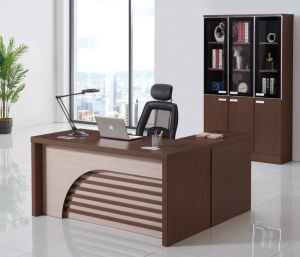Introduction In today's digital age, businesses are constantly seeking innovative ways to reach their target…

Ergonomic Excellence: Crafting Office Tables for Comfort and Productivity
In today’s fast-paced work environment, where productivity and efficiency are paramount, creating an office space that promotes comfort and well-being is more crucial than ever. A significant part of this equation is the design and construction of office tables, which serve as the foundation of our workstations. Ergonomic excellence in crafting office tables can make a significant impact on the comfort and productivity of employees. In this article, we will explore the key elements of ergonomic office table design and why it matters.
1. Adjustable Height:
One of the fundamental aspects of an ergonomic executive table is its adjustable height. Not all employees are the same height, and providing a one-size-fits-all desk is a recipe for discomfort. Adjustable height tables allow employees to customize their workstations to suit their individual needs, helping to reduce the risk of strain and discomfort. By allowing workers to set their desk height to align with their body, they can maintain proper posture, reducing the likelihood of musculoskeletal issues in the long term.
2. Workspace Organization:
Efficient workspace organization is another crucial element in crafting ergonomic office tables. A cluttered desk can lead to stress and decreased productivity. Well-designed tables should incorporate storage solutions, cable management, and efficient layouts to keep workspaces organized. A clear, uncluttered desk allows employees to focus on their tasks and prevents distractions, ultimately enhancing productivity.
3. Quality Materials:
The choice of materials plays a significant role in crafting ergonomic office tables. Quality materials not only contribute to the aesthetic appeal of the workspace but also affect durability and comfort. Investing in sturdy, sustainable materials not only ensures the longevity of the office furniture but also provides a more comfortable and pleasing work environment. Ergonomically designed office tables are often crafted from materials that are both environmentally friendly and durable.
4. Cable Management:
With the proliferation of electronic devices in the modern workplace, cable management has become a pressing concern. Disorganized cables not only create a cluttered appearance but can also pose safety risks. Ergonomic office tables incorporate cable management systems to keep wires hidden and organized. This not only enhances the aesthetics of the workspace but also minimizes tripping hazards and ensures that employees can work efficiently without the inconvenience of tangled cords.
5. Supportive Accessories:
Ergonomic excellence extends to the inclusion of supportive accessories. This may include monitor arms, keyboard trays, and ergonomic chairs designed to complement the office table. These accessories are designed to promote proper posture and reduce strain on the body, enhancing overall comfort and productivity. Adjustable monitor heights, for example, can help prevent neck and eye strain, while keyboard trays promote a more natural typing posture.
6. Ergonomic Design Principles:
Ergonomic office tables are crafted with careful consideration of ergonomic design principles. This means that the dimensions, angles, and shapes of the tables are optimized to support the natural movements and postures of employees. Rounded edges, height-adjustable options, and spacious work surfaces are just a few examples of how ergonomic design principles are incorporated into office table design to minimize discomfort and stress on the body.
7. Collaboration Spaces:
Ergonomic excellence doesn’t only pertain to individual workstations. It extends to collaborative spaces as well. Crafted office table design for team meetings, brainstorming sessions, and collaborative work should also consider the comfort and well-being of employees. These tables should be designed to promote effective communication and collaboration without sacrificing comfort.
8. Environmental Considerations:
Crafting ergonomic office tables also involves considering the environmental impact. Sustainable materials and manufacturing practices reduce the carbon footprint of the furniture. Moreover, durable tables that last longer reduce the need for frequent replacements, contributing to sustainability. Office furniture manufacturers are increasingly embracing eco-friendly practices to align with growing environmental concerns.
In conclusion, crafting office tables with ergonomic excellence is not a mere luxury but a necessity for modern workplaces. Ergonomically designed office tables not only promote comfort but also significantly enhance productivity and well-being. When employees are comfortable, they can focus on their tasks without the distraction of discomfort or health issues. Employers who invest in ergonomic office tables are making a smart investment in the success of their employees and their business as a whole. So, when it comes to your office furniture, always keep ergonomics in mind.




This Post Has 0 Comments